Oracle ERP vs Salesforce
June 05, 2023 | Author: Sandeep Sharma
14
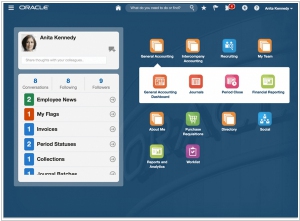
Oracle Enterprise Resource Planning (ERP) Cloud is a suite of cloud applications for finance, project management, procurement, risk management, and other core day-to-day activities important in every business, regardless of size, industry, or geography. Designed from the ground-up with a modern architecture and technology, Oracle ERP Cloud is natively connected with all Oracle enterprise cloud applications and scales inherently to support added users, transactions, and sites as your business grows by size and into new markets across your country or the globe.
75
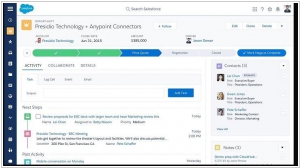
Most-popular CRM. Easy collaboration. Proven cloud platform. Salesforce.com offers everything you need to transform your business into a Social Enterprise, so you can connect to customers and employees like never before. With no software or hardware to install, you're up and running—and seeing a positive impact on your business—quickly.
Oracle ERP and Salesforce are both powerful software solutions, but they have different focuses and functionalities. Oracle ERP (Enterprise Resource Planning) is a comprehensive suite of integrated applications designed to manage various business processes, including finance, supply chain, human resources, and manufacturing. It offers features for financial management, procurement, project management, inventory control, and more. Salesforce, on the other hand, is a leading customer relationship management (CRM) platform that focuses on sales, marketing, and customer service. It provides tools for managing customer interactions, lead generation, opportunity tracking, and customer support. Salesforce also offers a wide range of additional features through its AppExchange marketplace, allowing businesses to extend the functionality of their CRM system.
See also: Top 10 Online CRM software
See also: Top 10 Online CRM software
Oracle ERP vs Salesforce in our news:
2023. Salesforce to acquire Airkit.ai, a low-code platform for building AI customer service agents
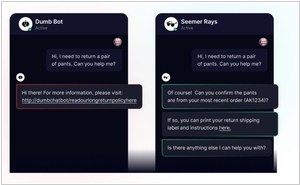
Salesforce is set to acquire Airkit.ai, a low-code platform designed to assist e-commerce enterprises in constructing AI-driven customer service agents. Initially conceived as a self-serve customer engagement platform, Airkit facilitated the integration of data silos and addressed various use cases like user onboarding. However, in a recent rebranding move, the company transformed into Airkit.ai and unveiled its inaugural integrated product, a GPT-4-powered platform enabling businesses like OpenTable and ShipBob to develop customized customer service chatbots capable of handling inquiries related to order status, refunds, product information, and more.
2023. Salesforce launches AI Cloud to bring models to the enterprise
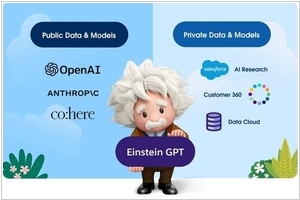
Salesforce is introducing a new collection of products with the goal of strengthening its position in the highly competitive field of AI. This suite, known as AI Cloud, consists of tools that are designed to provide AI solutions that are suitable for enterprise use. It represents Salesforce's latest effort to enhance its product lineup with AI capabilities across different disciplines. The launch of AI Cloud builds upon the company's previous generative AI initiative, which was introduced in March, aiming to incorporate generative AI throughout the entire Salesforce platform. AI Cloud serves as a hosting and delivery platform for AI models, specifically those focused on generating text, from a variety of partners such as Amazon Web Services, Anthropic, Cohere, and OpenAI. Additionally, Salesforce's own AI research division offers first-party models that power features like code generation and business process automation. Customers also have the option to bring their own custom-trained models to the platform while storing their data on their own infrastructure.
2020. Salesforce announces new Service Cloud workforce planning tool
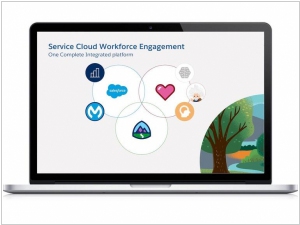
With a pandemic wreaking havoc in various parts of the globe, numerous companies are confronted with the challenge of managing dispersed customer service agents, leading to a complex workforce management situation. To address this issue, Salesforce is in the process of developing a new product called Service Cloud Workforce Engagement. Much like other Salesforce offerings, this solution comprises several crucial elements that work together to provide a comprehensive answer. Firstly, there is Service Forecast for Customer 360, a tool that utilizes AI to anticipate workforce requirements and intelligently allocate customer service requests. Furthermore, there is Omnichannel Capacity Planning, which aids managers in assigning customer service agents to channels like phone, messaging, or email based on the prevailing demand. Lastly, there is a training component designed to coach customer service agents on delivering accurate and appropriate responses tailored to specific situations.
2020. Salesforce applies AI to workflow with Einstein Automate
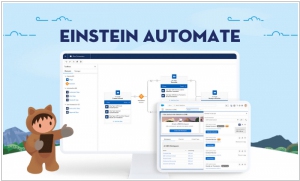
Salesforce has unveiled Einstein Automate, a new collection of workflow solutions powered by artificial intelligence (AI). Einstein serves as Salesforce's AI platform, encompassing all aspects of the company's product portfolio. It introduces automation to various tasks and simplifies the process of extracting valuable customer information, which often gets buried within vast amounts of data. Furthermore, Salesforce is incorporating MuleSoft, an integration company it acquired for $6.5 billion in 2018, into its offerings. This integration enables IT professionals to effortlessly build intricate connections between applications across the enterprise and the Salesforce suite of products, enhancing processes like mortgage approval workflows and more.
2020. Salesforce beefing up field service offering with AI
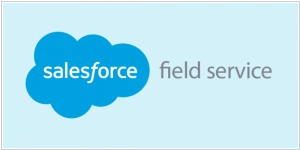
Salesforce is introducing AI-powered enhancements to its field service offerings, leveraging the capabilities of artificial intelligence. One of the key additions is Dynamic Priority, which allows the machine to set repair priorities based on factors such as service agreement type and criticality, streamlining call organization and enabling dispatchers to focus on other tasks. Furthermore, Salesforce aims to provide customers with a similar experience to tracking a driver's progress in a rideshare app. The introduction of Appointment Assistant, a new application, empowers customers to track the arrival time of their assigned repair person, ensuring they are aware of when to expect them.
2020. Salesforce announces a new mobile collaboration tool for sales called Anywhere
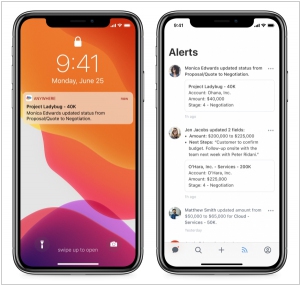
Salesforce has introduced a new tool called Salesforce Anywhere with the purpose of facilitating collaboration and data sharing among teams, regardless of their location. Recognizing the increasing significance of collaboration in a digital environment during the pandemic, the development of such an application became crucial for the company. The primary objective is to go beyond the confines of a traditional database and enable salespeople to access the most relevant information based on their sales pipelines. This tool allows employees to share information within their teams and engage in discussions related to that specific data. While there are other chat tools available, Salesforce Anywhere is specifically tailored for sharing Salesforce data, distinguishing it from more general-purpose platforms like Slack or other business chat tools.
2018. Salesforce allows to enter data to CRM via voice
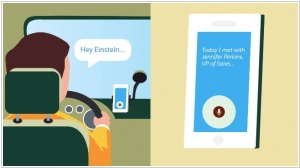
Sales managers are renowned for their verbal prowess, as talking is an integral part of their job. However, when it comes to entering customer data into a CRM system, they are faced with the arduous task of typing. Salesforce aims to alleviate this cognitive dissonance by introducing a new feature called Einstein Voice. This feature enables users to input data into the system effortlessly using natural speech. Just imagine, you hop into your car, open the mobile app, and have a conversation with a virtual assistant. You might say, "I just had a meeting with John Smith. He expressed interest in making a purchase but requested a follow-up call in a week...". The virtual assistant then dutifully adds a note to the customer's history in the CRM system. However, Salesforce might need to address the personality of their virtual assistant. It seems incongruous to task Einstein with such mundane responsibilities.
2018. Salesforce released new product - Customer 360
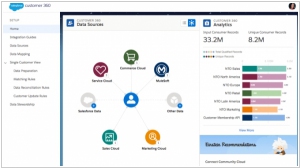
Customer 360 is an innovative software that integrates various customer data components to provide a more cohesive view within the Salesforce product family. Leveraging technology from Salesforce's Mulesoft acquisition, this solution aims to empower customer service representatives by equipping them with a comprehensive understanding of your interactions with the company. By eliminating the need for redundant information sharing, the representative can address your needs more effectively. The primary objective is to consolidate different product functionalities—such as sales, service, community, commerce, and marketing—into a unified customer view. Remarkably, this can be achieved without the need for coding, as highlighted by Salesforce.
2018. Salesforce simplifies phone sales
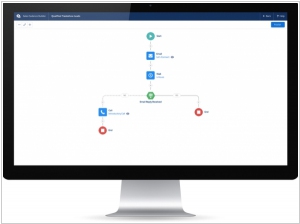
Salesforce has recently introduced updates to its core Sales Cloud, focusing on automation and integration. One of the key enhancements is the simplification of inside phone sales, where the sales team is provided with a prioritized list of calls based on conversion likelihood. Moreover, the team is guided through a sales process that aligns with management-defined best practices. High Velocity Sales leverages Salesforce Einstein's underlying intelligence to optimize the sales process, increasing the chances of converting prospects. This includes determining contact frequency and tailoring content. For phone calls, this might involve providing call scripts with suggested dialogue for engaging prospects. For emails, it may offer relevant information aimed at moving the prospect closer to a sale, along with recommendations on email frequency. As the sales team progresses towards closing deals, Salesforce CPQ (configure, price, quote) capabilities come into play. Originally stemming from the company's acquisition of SteelBrick, this product receives an exciting update for Dreamforce this year.
2018. Salesforce introduces Integration Cloud on heels of MuleSoft acquisition
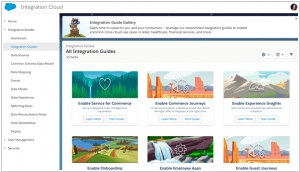
One week following the acquisition of MuleSoft, Salesforce has unveiled Integration Cloud, a solution built upon the acquired technology. Integration Cloud comprises three main components: the Integration Platform, which will ultimately be powered by MuleSoft; Integration Builder, a tool that enables the consolidation of comprehensive customer profiles from various Salesforce tools and enterprise data repositories; and Integration Experiences, designed to assist brands in creating personalized experiences by leveraging insights from the aforementioned tools. Currently, Integration Cloud includes a few elements independent of MuleSoft, such as Lightning Flow, a workflow tool enabling Salesforce customers to build workflows utilizing customer data stored in Salesforce CRM.


